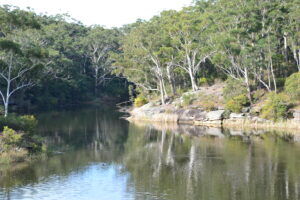How the NBDL will work with Australia’s existing environmental data infrastructure
Powered by new technology developed by CSIRO, a National Biodiversity DNA Library will enable better environmental monitoring and management. We will deliver this in partnership with Australia’s national research infrastructure and the natural resource management and biodiversity science sectors.
To achieve the goal of a National Biodiversity DNA Library (NBDL) for Australia, we will be partnering with multiple organisations across Australia’s environmental data infrastructure landscape.
These organisations would include National Collaborative Research Infrastructure Strategy (NCRIS) facilities, such as the Atlas of Living Australia (ALA), Bioplatforms Australia, the Integrated Marine Observing System (IMOS), and TERN, Australia’s land ecosystem observatory. We would also partner with the key institutions (museums and herbaria) that hold and curate the reference specimens that will underpin the Library.
TERN is planning to provide new DNA‑based biological observations, particularly with respect to soil and freshwater. Credit: Simon_sees, Flickr CC-BY-2.0
Together, these facilities will form the supply chain for Australia’s next generation of biodiversity and biosecurity monitoring and ensure Australia can boast world’s best environmental management.
- The Atlas of Living Australia (ALA) includes biodiversity observations made from eDNA. The accuracy and resolution of these will be increased by the NBDL. Reference DNA sequences will be derived from vouchered specimens whose metadata will be directly linked to the ALA database and publicly discoverable.
- Bioplatforms Australia is partnering to provide DNA sequencing resources to the NBDL. Bioplatforms Australia is a hub for access to networks of molecular technologists and bioinformatics with capability for supporting the NBDL.
- The Integrated Marine Observing System (IMOS) aspires to be a significant contributor to new DNA-based biological observations of marine systems in the future. As a major end-user IMOS would provide guidance on priorities for target marine organisms for inclusion in a national DNA library.
- The Terrestrial Ecosystem Research Network (TERN) is planning to be a significant provider of new DNA‑based biological observations, particularly with respect to soil and freshwater. TERN would provide guidance on priorities for target terrestrial organisms for inclusion in national DNA library.
- Australia’s biodiversity collections (museums and herbaria) represent the start of the environmental management supply chain. The collections provide the taxonomic backbone that will underpin the library and enable its data to be managed effectively.
Contact Dr Olly Berry if you would like to find out more about this ambitious project.

